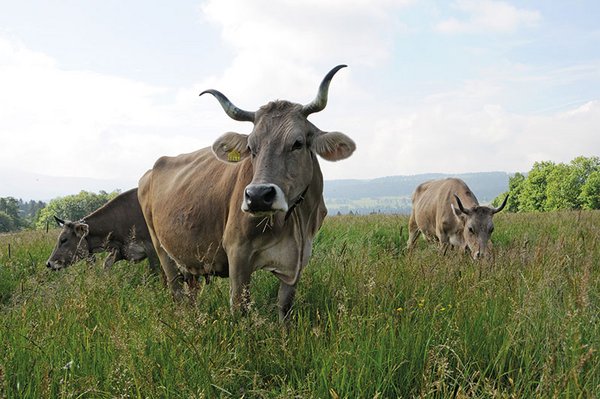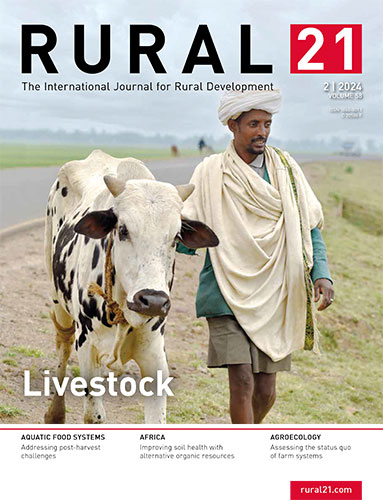 Download this article in magazine layout
Download this article in magazine layout
- Share this article
- Subscribe to our newsletter
Pastures benefit cattle welfare and product quality
By their digestive physiology, ruminants are world champions in degrading, utilising and converting fibrous plant material into human edible protein. No doubt, this was the reason for their domestication and millennia of herding cultures in grassland and rangeland regions all over the globe. They provide food from a resource which is otherwise hard to utilise by human production activities. But this is not all. Over long periods of time, herding has significantly contributed to the formation of black soils, landscapes and pastureland ecosystems. Today, stocking pastureland is absolutely crucial to the conservation of biodiversity, soils and below-ground carbon stocks. Both abandonment and overstocking have severe detrimental effects on these values. Nevertheless, both happen, with a strong tendency towards abandonment in industrialised and overstocking in smallholder agriculture.
Selection is meaningful behaviour
However, besides multiple synergistic ecosystem services, grazing, in particular of natural pastures, can bring along welfare and health benefits which add to the value of utilising the resource. Herbal plants as well as shrub and tree leaves contain manifold phytochemicals like tannins, essential oils, alkaloids, etc., which impact the microbial fermentation of the feed in the ruminant’s forestomach. Selecting or avoiding plant parts containing such active substances provides an opportunity for the animal to steer its digestive fermentation, therewith optimising the amounts of beneficial omega-3 fatty acids, antioxidants and vitamins, the efficiency of feed protein utilisation and much more. Moreover, broad research evidence exists that ruminants are able to choose plants with phytochemicals targeted to heal parasitic diseases or bind poisons like mycotoxins in their digestive tract. The higher botanical biodiversity is, the greater the animal’s opportunity for choice.
Increased omega-3 levels in ruminant products from biodiverse pastures are evident, and the physiological mechanism behind this is that phytochemicals protect these fatty acids from too frequent microbial modulation in the forestomach. The health value of omega-3 is relevant not only for human consumers but also for the animals themselves – since we are all mammals with a similar metabolism. The importance for the animal itself is the link to selection behaviour: it is not acting by chance but by targeted balancing of its own digestive metabolism and health. Driven by desire and aversion for tastes and odours, this behaviour has been successful for 30 million years, when the first forms of ruminants developed. Opportunity to express these behaviours should be considered part of species-appropriate animal husbandry, even though the opposite is the case in modern stables with total mixed rations.
Biodiversity – benefit and beneficiary
To conclude, grazing natural pastures is a means to promote animal welfare and health, inherently providing healthier products, better protein efficiency, and, depending on appropriate management, sustaining grasslands with their important ecosystem services. In well-managed systems, botanical biodiversity is beneficiary and benefit at the same time.
The ceterum censeo on this topic are methane emissions from ruminants, which cannot be neglected but should be much stricter contextualised and compared with the ecosystem services described above. Not least, methane-inhibiting potentials of herbal phytochemicals are broadly investigated. Generalisable in vivo proof is, however, lacking so far.
Florian Leiber is an animal scientist who has worked on grassland-based ruminant production for 25 years. He is Co-Head of the Department of Livestock Sciences at the Research Institute for Organic Agriculture (FiBL) in Switzerland.
Contact: florian.leiber@fibl.org
References:
Teague, R., & Kreuter, U. Managing Grazing to Restore Soil Health, Ecosystem Function, and Ecosystem Services. Front. Sustain. Food Syst. 4, 534187 (2020).
Leiber, F. Let them graze! Potentials of ruminant production outside the feed-food competition. In: El-Hage Scialabba (Ed.): Managing Healthy Livestock Production and Consumption. Elsevier, Academic Press, 137-148 (2021).
Dittmann, M.T., Leiber, F. Effect size and land-requirements of plant-based feeding interventions to reduce methane emissions from cattle and sheep in European subalpine regions. Anim. Feed Sci. Technol. 308, 115884 (2024).




